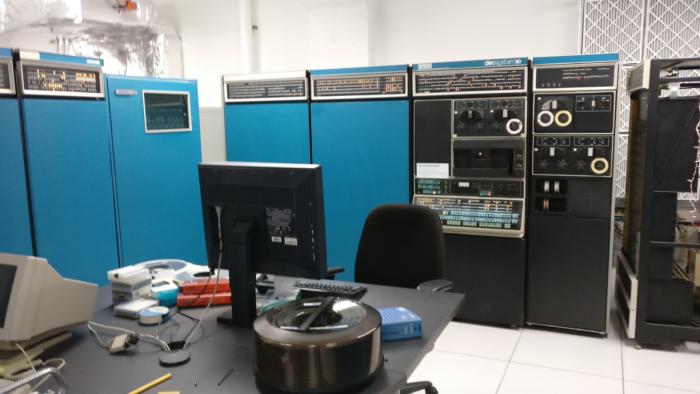The Living Computer Museum based by means of Paul Allen
Share
In 2017, I went as much as Seattle for PAX as regular, and at the same time as I was up there, I heard about the Living Computer Museum, an organization in southern Seattle founded through Paul Allen to keep PC records. I took a day without work from the show to wander down there. We’re given an at the back of the scenes excursion of the museum, and then…In no way we’re given the round to write approximately it. Fall’s busy online game launch season buried me, and at the same time, as I eventually transcribed a complete hour of audio and wrote the tale, it appeared weird to run it six or 8 months after the fact—so it simply sat on my tough force.

Paul Allen passed away October 15, though, and as a result, it looks like he had an exquisite time good time in all his lesser-regarded ventures. What began as a piece of nostalgia for him, a PDP-10 in a nondescript Seattle warehouse is now one of the quality laptop museums I’ve ever been to, a clearly special place wherein traffic can move fingers on with the entirety from a CDC 6500 to an Apple I to a Xerox Alto.
Some of the details may also have been modified inside the final 14 months—I don’t recognize whether the museum’s gotten its CRAY-2 up and going for walks yet. Nevertheless, I hope you’ll revel in this look at the museum even though each is public-dealing with aspects and the substantial aid operation it necessitates, and the way to Paul Allen for his function in founding this first-rate group.
Living records
“Other museums placed a pitcher in front of their computer systems. We placed a chair.” I toured Seattle’s Living Computer Museum with Executive Director Lath Carlson for over an hour. However, that simple line stuck with me the most—perfectly encapsulating what makes the Living Computer Museum unique. Housed in Seattle’s SoDo neighborhood, the Living Computer Museum doesn’t appear to be plenty from the outdoors—it’s cleaner and a bit brighter than the surrounding warehouses; however, people who know Seattle realize that’s also no longer saying plenty. This unassuming construction might be the foremost PC records museum I’ve ever visited. However, it is simplest for one purpose: You can virtually use the PCs on a show—even the supercomputers.
“The museum started somewhat backward from maximum museums,” says Carlson, shouting over the noise of about half a dozen mainframes. We’re standing in a bright white room packed with a CDC 6500, a Xerox Sigma nine, an IBM System/360 Model 30, and most significantly, a PDP-10. Have to say. Around 15 years ago, Microsoft co-founder Paul Allen bought this PDP-10, the equal model he and Bill Gates used in their earliest years. And then he placed it up on the internet for humans to faraway login—you may have heard of PDPPlanet.Com.

“What took place become they put the website out there, started out getting customers, and then people could name and say ‘Can I come to see the pc?'” says Carlson. At the time, it turned into only a PDP-10 in a warehouse, not anything fancy. “Then Paul essentially stated, ‘Okay, sufficient human beings are interested, perhaps it ought to be a museum.'”
Opened in 2012, said museum now encompasses the full flooring of the warehouse. The PDP-10 sits amongst half a dozen other mainframe machines, every with its personal rich records. For instance, Carlson describes the restoration of a CDC 6500, one of the international’s earliest supercomputers, designed using the legendary Seymour Cray. “This gadget came out of Purdue University, and when we were given it, every this sort of wire here changed into the cut.” He gestures to a financial institution of heaps of wires strolling down the system’s center.
Dave, one of our engineers, spent months rewiring,” he keeps. “We observed within the method that machines like this, the speed electrons go through the wires is in reality pretty essential, so a good way to get a few matters to paintings right we had to change the lengths of some wires… But, of course, first, we needed to find an employer to remake the right wires.”
Of route.
The museum also had to replace many common sense modules without spare parts that intended to reverse the hardware with current details. One of the museum’s engineers “needed to take one of those apart and measure the value of everything, then redecorate it.” They additionally established a liquid cooling loop that runs all the manner to the roof.

A ton of labor, however, on the stop? The CDC 6500 runs. At the Living Computer Museum, you could get hold of the sector’s third-ever supercomputer, which helped look at nuclear physics and the structure of the cold virus, which has less computing power than the smartphone in your pocket. Carlson talks me through the history of a few other machines. One, an IBM 360-30, changed into located in a basement in North Carolina. It changed into 1/2-dismantled when I noticed it, these days scrubbed freed from 20 peculiar years of mildew damage. Next, there’s an IBM 7090, which did time with NASA on the gap software. Finally, there’s a punch card reader. “All these machines are getting on 40 and 50 years old, or even when modern, they weren’t always the maximum dependable matters accessible. They constantly had technicians in the workforce; they have usually been repairing them, so this isn’t unusual. You understand? It’s just a little more difficult once they become old.





